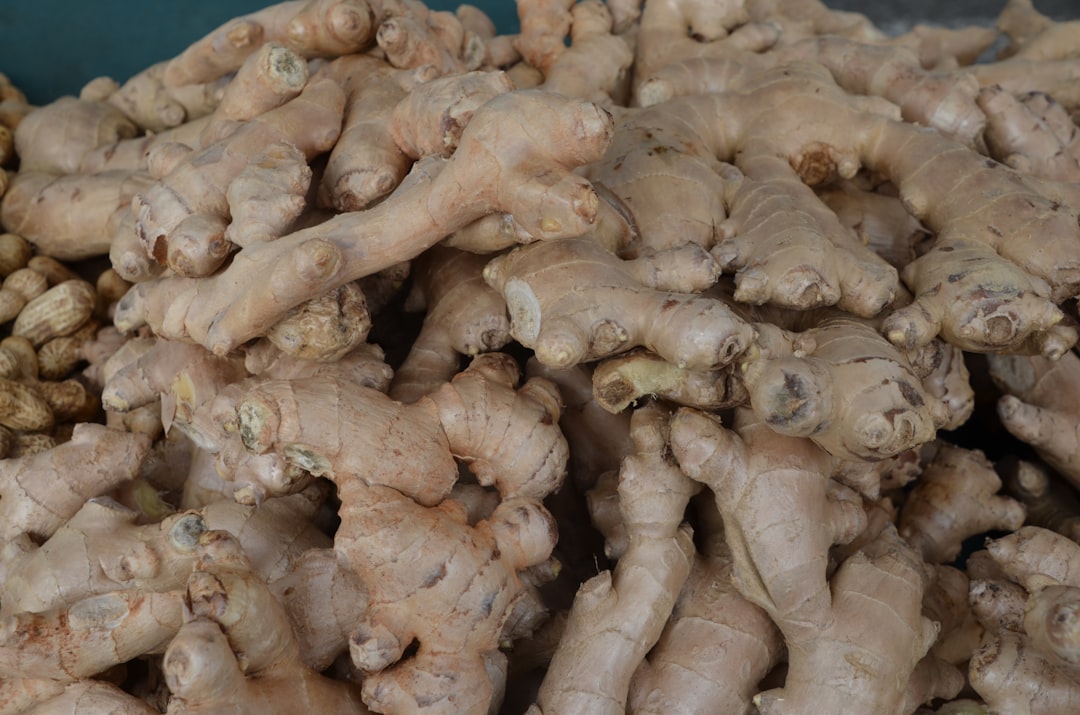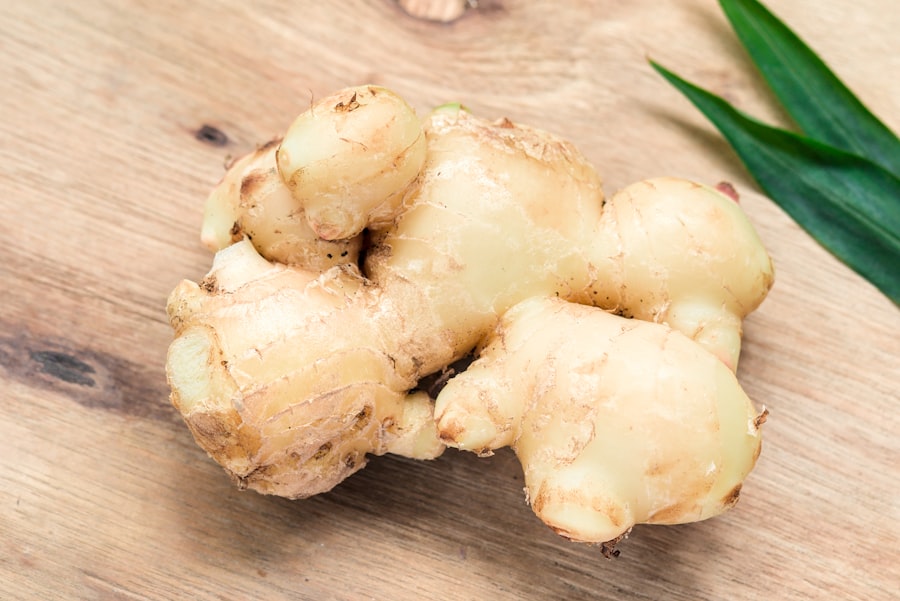Growing Ginger: Tips for a Thriving Plant

Ginger is a versatile and flavorful spice that has been used for centuries in various cuisines and traditional medicine. It is known for its unique taste and aroma, as well as its numerous health benefits. Growing ginger at home allows you to have a fresh supply of this wonderful spice right at your fingertips.
One of the main reasons to grow ginger at home is the control it gives you over the quality and source of your ginger. When you grow your own ginger, you can ensure that it is grown organically without the use of harmful pesticides or chemicals. Additionally, store-bought ginger can sometimes be old and dry, whereas freshly harvested ginger from your garden will be much more flavorful and aromatic.
Choosing the Right Ginger Variety
There are several different varieties of ginger, each with its own unique characteristics. The most common variety is Zingiber officinale, which is the type of ginger typically found in grocery stores. This variety has a spicy and pungent flavor, making it perfect for cooking and baking.
Another popular variety is Galangal ginger, also known as Thai ginger. This variety has a milder flavor compared to Zingiber officinale and is often used in Thai cuisine. It has a citrusy and earthy taste that adds depth to dishes.
When choosing a ginger variety to grow at home, there are a few factors to consider. First, consider your climate and growing conditions. Some varieties of ginger are more tolerant of cold temperatures, while others prefer warmer climates. Additionally, consider the flavor profile you prefer and how you plan to use the ginger in your cooking.
Preparing the Soil for Ginger Planting
Ginger plants prefer loose, well-draining soil that is rich in organic matter. Before planting ginger, it is important to prepare the soil properly to ensure optimal growth and yield.
Start by clearing the area where you plan to plant the ginger. Remove any weeds or grass and loosen the soil with a garden fork or tiller. Next, amend the soil with organic matter such as compost or well-rotted manure. This will help improve the soil structure and fertility.
It is also important to ensure that the soil has good drainage. If your soil is heavy or clay-like, consider adding sand or perlite to improve drainage. Ginger plants do not like to sit in waterlogged soil, as this can lead to root rot.
Planting Ginger: Tips and Techniques
| Topic | Description |
|---|---|
| Soil Preparation | Loosen soil to a depth of 12-15 inches and add compost or well-rotted manure to improve drainage and fertility. |
| Planting Time | Plant ginger in early spring or late summer when the soil is warm and moist. |
| Spacing | Plant ginger rhizomes 8-10 inches apart and 2-4 inches deep. |
| Watering | Keep the soil moist but not waterlogged. Water regularly during dry spells. |
| Fertilizing | Apply a balanced fertilizer every 4-6 weeks during the growing season. |
| Harvesting | Harvest ginger after 8-10 months when the leaves start to yellow and die back. Carefully dig up the rhizomes and dry them in the sun for a few days before storing. |
Ginger is typically planted from rhizomes, which are the underground stems of the plant. To plant ginger, start by selecting healthy and plump rhizomes from a reputable source. Avoid using rhizomes that are shriveled or moldy.
The best time to plant ginger is in the spring, after the last frost has passed. If you live in a colder climate, you can start the ginger indoors a few weeks before the last frost and transplant it outside once the weather warms up.
To plant ginger, dig a hole that is about 2-3 inches deep and place the rhizome in the hole with the buds facing up. Cover the rhizome with soil, making sure it is well-covered but not buried too deeply. Space the ginger plants about 8-10 inches apart to allow for proper growth and airflow.
If you don’t have a garden or prefer to grow ginger in containers, it is entirely possible to do so. Choose a container that is at least 12 inches deep and wide, with good drainage holes. Fill the container with well-draining potting mix and plant the ginger rhizomes as described above.
Watering and Fertilizing Ginger Plants
Ginger plants require consistent moisture to thrive, but they do not like to be waterlogged. It is important to water ginger plants regularly, especially during dry periods. Aim to keep the soil evenly moist, but not soggy.
To water ginger plants, use a watering can or hose with a gentle spray attachment. Water at the base of the plant, avoiding wetting the leaves as this can lead to fungal diseases. Water deeply to ensure that the roots receive enough moisture.
In terms of fertilizing, ginger plants benefit from regular feeding with a balanced organic fertilizer. Apply the fertilizer according to the package instructions, usually every 4-6 weeks during the growing season. Avoid over-fertilizing, as this can lead to excessive foliage growth at the expense of rhizome development.
Managing Pests and Diseases in Ginger Plants

Like any plant, ginger is susceptible to certain pests and diseases. Common pests that can affect ginger plants include aphids, spider mites, and root-knot nematodes. These pests can cause damage to the leaves and roots of the plant, leading to stunted growth and reduced yield.
To prevent pest infestations, it is important to practice good garden hygiene. Remove any weeds or debris from around the ginger plants, as these can harbor pests. Additionally, inspect your plants regularly for signs of pest activity and take appropriate action if necessary.
If you notice aphids or spider mites on your ginger plants, you can try spraying them with a mixture of water and mild dish soap. This can help suffocate and kill the pests. For more severe infestations, you may need to use an organic insecticidal soap or neem oil.
In terms of diseases, ginger plants can be susceptible to fungal infections such as root rot and leaf spot. To prevent these diseases, it is important to provide good air circulation around the plants by spacing them properly. Avoid overwatering and ensure that the soil has good drainage.
Harvesting and Storing Ginger
Ginger is typically harvested when the leaves start to turn yellow and die back. This usually occurs about 8-10 months after planting, depending on the variety and growing conditions. To harvest ginger, carefully dig up the rhizomes using a garden fork or shovel.
Once harvested, ginger can be stored in a cool, dry place for several weeks. To extend the shelf life of ginger, you can also store it in the refrigerator or freezer. To freeze ginger, simply peel and grate it, then place it in an airtight container or freezer bag.
Propagating Ginger: How to Grow Ginger from Rhizomes
If you want to expand your ginger garden or share it with friends and family, you can propagate ginger from rhizomes. To do this, select healthy and plump rhizomes and cut them into smaller pieces, making sure each piece has at least one bud.
Plant the rhizome pieces in the same way as described earlier, making sure they are well-covered with soil. Water the newly planted rhizomes thoroughly and keep the soil consistently moist until they start to sprout.
Overwintering Ginger Plants
Ginger plants are tropical perennials that do not tolerate cold temperatures well. If you live in a colder climate, you will need to take steps to protect your ginger plants from freezing temperatures.
One option is to dig up the ginger plants before the first frost and bring them indoors for the winter. To do this, carefully dig up the plants, being careful not to damage the rhizomes. Shake off any excess soil and trim back the foliage. Place the plants in a cool, dark place such as a basement or garage where temperatures stay above freezing.
Another option is to mulch the ginger plants heavily with straw or leaves before the first frost. This will help insulate the plants and protect them from freezing temperatures. Remove the mulch in the spring once the danger of frost has passed.
Culinary Uses of Ginger: Ideas and Recipes
Ginger is a versatile spice that can be used in a variety of dishes and recipes. It adds a unique flavor and aroma to both sweet and savory dishes, making it a staple in many cuisines around the world.
In savory dishes, ginger pairs well with garlic, soy sauce, and chili peppers. It can be used to add depth and complexity to stir-fries, curries, and soups. In sweet dishes, ginger adds a warm and spicy flavor that complements fruits, chocolate, and other spices. It can be used in cakes, cookies, pies, and even beverages such as ginger tea or ginger ale.
Growing ginger at home is a rewarding and enjoyable experience. Not only does it provide you with a fresh supply of this versatile spice, but it also allows you to have control over the quality and source of your ginger. By choosing the right variety, preparing the soil properly, and providing the right care, you can successfully grow ginger in your own garden or containers.
Whether you use ginger for its culinary uses or its health benefits, having a supply of fresh ginger on hand is always a good idea. From stir-fries to baked goods, ginger adds a unique flavor and aroma that can elevate any dish. So why not give it a try and start growing your own ginger today? You won’t be disappointed!



